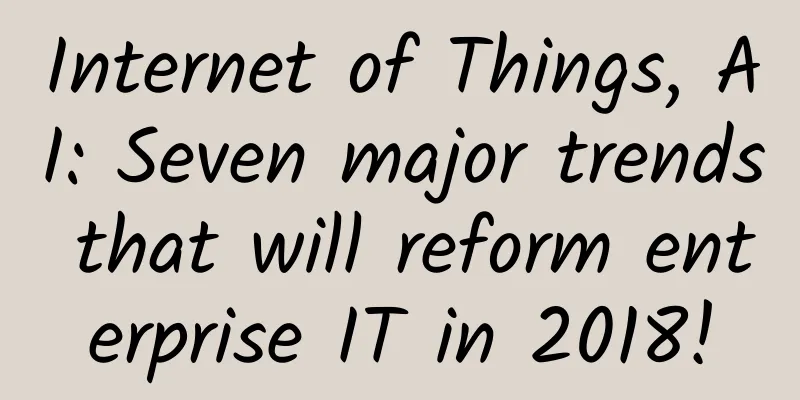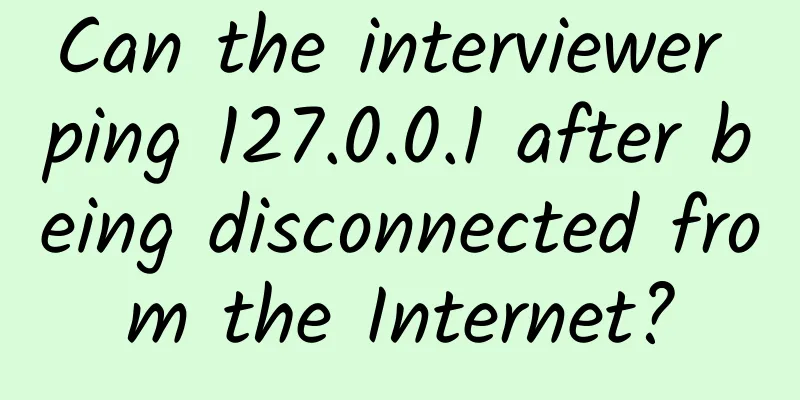Internet of Things, AI: Seven major trends that will reform enterprise IT in 2018!

|
I have said in recent articles that 2018 will be the year of the Internet of Things (IoT) and Artificial Intelligence (AI). The recent forecast of Verizon Enterprise Solution also puts the Internet of Things (IoT) and Artificial Intelligence (AI) in the focus of 2018, and even claims that software-defined networking (SDN), the Internet of Things (IoT) and artificial intelligence (AI) have gradually become mainstream. Therefore, how companies make good use of these emerging technologies will be the focus in 2018. If companies can truly transform technology into an advantage without complicating operations, this will be the key to success.
The following trends will impact our global enterprise and government clients in 2018: 1. SDN officially takes off As software-defined networking (SDN) technology spreads around the world, enterprises are beginning to explore how they can take advantage of the security, flexibility and agility brought by virtual network services. Application-aware networking will be the next breakthrough: managing application performance, performance and security to achieve full use of bandwidth, which will become more critical in this increasingly content-driven world. 2. Information security integrated into the system Information security will gradually reform in 2018 to support business in an embedded platform, such as providing end-to-end managed security infrastructure for networks, developers and applications. Looking at today's cyber threats, most of them are global in scale. At the same time, it has become the norm to deal with criminals in the form of open attitude and information sharing, both online and offline. With this reform, measuring the effectiveness of information security will be able to be executed in an imperative manner and integrate cyber risks into corporate risk assessments. In addition to improving the efficiency of risk management, quantifying security posture, maturity and hygiene can also establish an information security return on investment, thereby demonstrating the capabilities of senior management. 3. IT collaboration becomes an important bargaining chip In recent years, some companies have already seen the opportunity and have gradually abandoned old PBXs and switched to IP-supported telephone systems. 2018 will be the year when IT technology really begins to reform workplace collaboration, especially under the influence of third-party compliance. Employees will be able to seamlessly access calendar information and shared files, and quickly communicate on different platforms in a secure environment. The ultimate goal will be to improve user experience and productivity through the use of multiple channels. The use of software-defined networks (SDN) can provide more effective collaboration utilities for intelligent data management and multi-platform call routing functions, and mobile applications also allow employees and consumers to directly grasp information. 4. Artificial intelligence and robotics will adopt IoT technology The Internet of Things will begin to become part of the enterprise in 2018. One of the major challenges will be how to integrate device management into the entire IT infrastructure without overloading the enterprise. Artificial intelligence and robotics technology will be able to provide intelligent and automated IoT management deployment in a cheap and fast way. 5. People take more control of their IT experience As consumers become more aware of the power of data, they will be more selective about who they interact with in the future. Therefore, brands should pay more attention to how they handle data, because customers will want to have a closer relationship with brands and interact with them in a fluid, secure and simple way. Brands that can achieve this will stand out. 6. Interoperability will be an important issue for public safety Looking back at 2017, the world has experienced many terrorist attacks and natural disasters. For first responders, secure and seamless connection with deployable networks will be an important focus in 2018, especially the FirstNet in the United States. In addition to allowing enterprises and public safety-related agencies to benefit from the choice of network and technology services, interoperability can also promote innovation through market competition and help control costs. More importantly, when a disaster occurs, interoperability allows first responders to maintain communication with authorities and citizens. 7. Simplicity is the key to success As the world becomes increasingly complex, the success of an enterprise will depend on whether it can effectively separate core and non-core operations. Successful enterprises focus on delivering key business results and outsource non-core operations to key partners, so whether they can achieve simplification will determine the success or failure of an enterprise. IT transformation will continue to be a focus of global business, but it is a difficult road, especially given the global shortage of enterprise IT technical talent. |
<<: What is the Internet of Things, what is blockchain, and what is big data?
>>: Are blockchain and IoT a match made in heaven?
Recommend
5G Guide: Everything you want to know is here
Wireless communication technology is updated almo...
One year after number portability: China Mobile and other operators use various means to "retain" users, and 70% of consumers encounter obstacles
Recently, the Shaanxi Provincial Communications A...
DogYun New Year's Day promotion: 30% off on Elastic Cloud, 20% off on Classic Cloud, 100 yuan off per month for dedicated servers, 10 yuan free for every 100 yuan recharged
DogYun (狗云) has launched a promotional event duri...
A quick overview of 5G industry developments in March 2021
After the rapid development in 2020, 2021 is a cr...
Why 5G and IoT security is more important than ever
[[421462]] The convergence of IoT and 5G is a gam...
RabbitMQ communication model work model
Hello everyone, I am Zhibeijun. Today, I will lea...
Unleashing the power of the tactile internet through 5G networks
How the Tactile Internet will usher in a new era ...
Do we really need 5G? Key facts you need to know
First, 2G was used for calling and texting, then,...
Network Analysis in Rust: Capturing and Analyzing Network Traffic with Pcap and Pnet
Network analysis is critical for monitoring, secu...
Don’t understand TCP three-way handshake and four-way wave? Interviewer: Go back and wait for notification!
🌟 Opening: You think you know TCP? Actually... Co...
What are the main application scenarios of 5G?
5G networks offer greater bandwidth than previous...
How are the two engines of future digital transformation: connectivity + cloud grounded?
[51CTO.com original article] After the statement...
5G commercial key equipment development completed: ready for large-scale popularization
Samsung recently announced that its 5G RF integra...
Sharktech: 1Gbps unlimited traffic high-defense server starting from $79/month, Los Angeles/Denver/Chicago/Netherlands data center
Sharktech, also known as Shark Data Center or SK ...
Liuliu Cloud: US 9929/UK/Japan native IP hosting monthly payment starting from 50 yuan
666clouds is a Chinese hosting company founded in...









